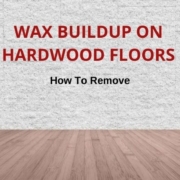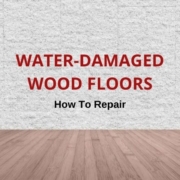How To Remove Glue From Hardwood Floors
Firstly, just so we’re all clear on this, glue and adhesives work best when applied by accident. It’s a law of some sort.
In fact, it never fails and while it’s true that accidents can be prevented, adhesives have a way of upending even the most carefully laid plans. What’s up with that?
Given the accidental aspects of glue and adhesives have naturally become second nature, I’ve nevertheless, resigned myself to the fact that I’ll probably never figure out a quick, painless, and odor-free way to remove an acrylic nail from the third knuckle of either index finger.
…and naturally, because I am admittedly, something of an expert in all things accidental, I can state with authority, that spills are a subset of accidents.
Also as an expert, I can offer my assurance that if it says, “spill proof” on the label, it’s a liar. Plain and simple. That’s just all there is to it because for some of us, it is indeed possible to spill toothpaste.
Hopefully, when you’re done reading, you’ll have a better understanding of:
- How to remove adhesive/glue from hardwood floors naturally
- How to remove adhesive/glue from unfinished hardwood floors
- How to remove linoleum glue from wood floors
Here’s What You Should Know About Adhesives On Wood Floors
Most glues and adhesives contain plasticizers. Very few do not. Super Glue is among these few. It becomes plastic as it cures. But either way, it’s either as strong or stronger than what it’s attached to.
The reason this matters is because plasticizers will bond to the lacquered finish of your hardwood floor. Once Super Glue, Gorilla Glue, adhesive tape, or even something as innocent as a sticker is affixed to it, the finish is forever compromised even if only slightly. Removal of the adhesive and/or plasticized glue is all well and good, but the lacquered finish will never be quite the same.
Of course you can sand the area where the finish is compromised, and apply a new finish, or you can hire an expert to do this as well as feather the edges into the existing finish that surrounds it. But even the best expert can’t get this section to look like it’s part of the rest and most will tell you as much.
Even though it was applied in sections or strips, the fact remains that all of your hardwood floor’s sealed finish was applied at the same time. Each of those sections or strips was united with the one next to it to form a complete, and entire whole. A patched area will never truly appear to be part of the rest.
In summary, the floor should be refinished.
The moral of the story ﹘ if it needs to be taped to the floor, then it doesn’t need to be on the floor to begin with
The news isn’t all bad. Most people find that even when a dull spot or a resurfaced patch is located in a place that a rug doesn’t cover, they can still live with it. Considering the cost to strip and refinish an entire floor almost invariably makes living with this type of thing infinitely easier to manage.
You’ll Still Need To Remove Glue From Hardwood Wherever You Find It.
Even if it means you’ll end up with several dull spots on your floor, the stickers, tape, and/or droplets of glue are far more unsightly. Leaving them as they are won’t improve the situation.
Contrary to popular belief, removing glue and adhesive does not require for the use of harsh chemicals, solvents, vinegar, denatured alcohol, mineral spirits, mineral oil, mineral water, vitamins and minerals, …etc.
So, What’s Up With Acetone?
Acetone is not recommended for use on anything that you don’t want removed.
Many People suggest the application of acetone diirectly onto the glue only. This would be a swell idea as long as you’re sure none of it will seep, leak, creep, or crawl onto the surrounding area.
Right.
I’m pretty sure I couldn’t pull it off either, especially given my track record for this sort of thing.
This isn’t to say these things don’t have their place, but for now, we can avoid them.
How To Remove Glue From Hardwood Floors Naturally
Things You’ll Need
Note: In case you don’t have these things handy, you can click on each of the items to purchase the one we recommend.
- A clean rag
- A blow dryer (A heat gun is over the top. Too hot)
- 1-½” – 2” brass putty knife
- Spray-on bee’s wax
If there are several places on your hardwood floors where glue or adhesive needs to be removed, or if you suspect the work could require a few hours of effort, consider adding the following:
- A few more clean rags
- A pair of knee pads
- 1.25” razor scraper and extra blades
- 4” razor scraper (window scraper) and extra blades
Removing Krazy Glue/Super Glue, Adhesive Tape, Stickers From Hardwood Floors
- Spray a bit of bee’s wax on either side of your brass putty knife. Allow any excess wax to drop onto the area of the floor located next to the edge of the glue/adhesive that’s closest to you. You’ll be starting at that edge and working forward.
- Use your non-dominant hand to hold the blow dryer directly over the glue (Oops! yes, turn it on first)
- With your dominant hand, hold the edge of the putty knife at an angle of about 45o to gently push or chip at the glue. Always be sure:
- to push outward and away
- the surface under your putty knife has bee’s wax on it or you’ll gouge the floor
- The adhesive should move along fairly easily. Use your clean rag to wipe it from your putty knife.
- As for the glue, stay after it. Try chilling the putty knife by running it under cold water. Alternate between using the dryer and the chilled putty knife. This will cause expansion and contraction of the glue and the surface of the floor if only slightly.
Ultimately, the glue will release in little chips at a time until the last chip is gone.
- Use your clean rag to gather up the loosened chips as you go. Be sure to gather all of them. Stepping on a stray later on can scratch your floor.
- Roll up the clean rag so that the chips of glue stay contained in it. Use the clean exterior of the rolled up rag to wipe away any excess bee’s wax and give the area a light buffing.
How To Remove Floor Glue From Wood
If you’ve installed your glued hardwood floor, you might find that you’ve spilled some of the glue. You might discover that some of it has squeezed up from between the boards.
If this happens, be sure to remove the glue immediately by wiping it thoroughly with a clean cloth dampened with water. Once the glue dries, removal is next to impossible.
As I’m always sure to let anyone know, flooring installation professionals are a very conscientious and fastidious lot. (I know I don’t have to say that, but I got a mortgage, a ton of bills, and this gig pays!)
Yet, if upon the completion of your professionally installed, glued hardwood floors, you happen to discover that one of the eminently talented installation experts overlooked a spot of floor glue that spilled onto the unfinished wood, all you need to do is call to advise of the situation. Your flooring installation will be sure to correct the trouble as soon as your message is passed along.
In the meantime, you are in a far better position to remove the glue and since the glue will become far more difficult to remove with every minute that passes, there’s no benefit in deciding it’s not your job.
Instead, do whatever’s necessary to remove the glue immediately and save the responsible party argument for another time. A clean rag and water should take care of this.
How To Remove Linoleum Glue From a Wood Subfloor
If you find yourself faced with traditional black mastic on a subfloor, it can only mean that the linoleum that was once held by it has been removed. Why anyone would do this – I’m sure I have no idea. As long as the tiles are all in one piece and all pieces are stable, linoleum is the ideal substrate for most other types of flooring. There is no need to remove it.
Even if a few of the linoleum tiles are broken, as long as they can be glued into place, the floor remains a viable substrate.
However, once the linoleum has been removed, on its own, the adhesive, or mastic as it was originally called, is likely to interfere with the installation of new flooring of any kind. The mastic will need to be removed.
Black asbestos mastic was produced until the mid ’70s. Some manufacturers continued to produce asbestos mastic well into the ’80s.
Because of this, it’s important to know what you’re dealing with. Where black floor glue with the tell-tale black comblike markings is discovered in a home built before 1975, the glue most likely contains asbestos. Asbestos removal should never involve sanding or scraping of any kind. Dust and other particles of asbestos are especially deadly.
As long as it remains undisturbed, the risk associated with being around asbestos is minimum.
For that matter, I can’t imagine that inhaling dust and particles of any kind of sanded adhesive would be beneficial to anyone’s health, but where black mastic asbestos is concerned especially, this is what makes removal so tricky.
The safest way to remove black mastic asbestos is by laying hot wet towels over one section at a time until the glue becomes soft enough to be peeled away with a putty knife.
On the whole, removing glue and adhesive from hardwood floors can be tedious and trying, and removal of black mastic asbestos can create health concerns. But by taking proper precautions and using appropriate tools, you’ll find that the process of removing any of these from hardwood floors can be completed efficiently, effectively, and safely.
Of course, for the accident-prone, there’s still no pain-free way to do it, but once you get your glued fingers separated from the bathroom counter, you too can have terrific-looking hardwood floors.
Table of Contents






